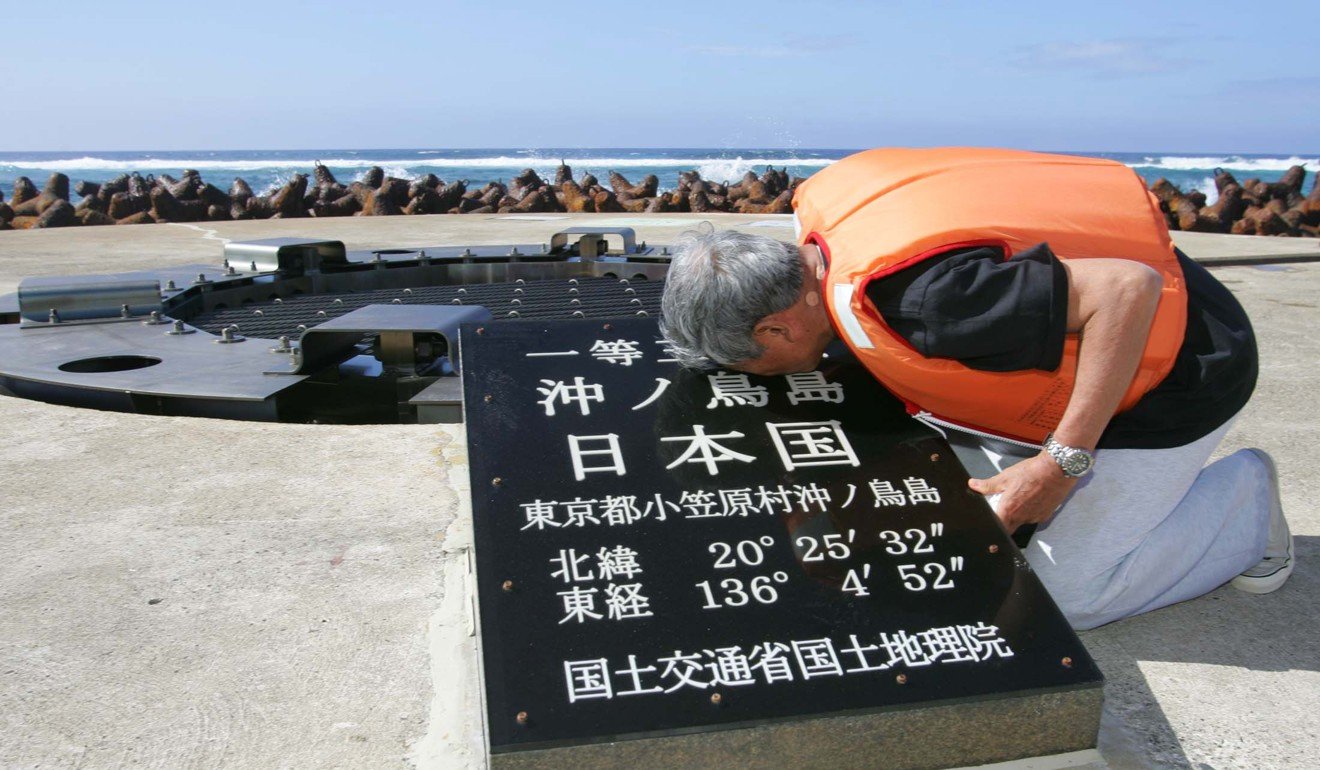
Japan protests Chinese survey ship operating near Okinotorishima atoll, a small but vital piece in Tokyo’s maritime territory claims
- The Chinese ship may have been seeking information on natural deposits, such as oil and gas, but it may also have had a military mission
Japan has lodged an official protest with Beijing after a Chinese government survey ship was identified operating in Japan’s exclusive economic zone (EEZ) around Okinotorishima, an atoll some 1,740km south of Tokyo that is the most southerly point of Japan.
The protest may fall on deaf ears, however, as Beijing has in the past carried out similar surveys and insisted Okinotorishima is merely a few rocks that would not be above the waves without reinforcement. Beijing has maintained Okinotorishima is not able to sustain human life and cannot be recognised as an island. And if it is not an island, Tokyo cannot lay claim to the surrounding 400,000 sq km of the Pacific as part of its EEZ.
The Chinese vessel was seen in the EEZ around the island on December 18, government officials said. Under the UN Convention of the Law of the Sea, conducting a maritime survey in another nation’s EEZ requires the agreement of that country in advance and Tokyo has said no permission was granted.
Japan’s record US$47 billion military spend aimed at countering China
“The vessel was carrying out marine scientific research activities in the waters near Okinawa,” said China’s Ministry of Foreign Affairs spokesman Lu Hao at his regular press conference on January 2.
He emphasised that China is party to the United Nations Convention on the Law of the Sea (UNCLOS) and carries out its marine scientific research activities in accordance with the convention.
Lu added that under the UNCLOS definitions, Okinawa Reef does not constitute an island, so the ship was not in any exclusive economic zone.
“The Japanese side arbitrarily called it an island ... which the Chinese side never recognised,” he said.

“China very much wants to know what is in that area, whether it’s natural resources like oil and gas or fish – but Japan is more worried about the vast deposits of methane hydrates that they have located in this area,” said Garren Mulloy, an associate professor of international relations at Japan’s Daito Bunka University.
Methane hydrate is a solid compound containing high levels of methane trapped in a crystal structure. Japan has sought to prevent other countries exploiting the resource.
According to Mulloy, the ship may also have had a military mission: China is eager to locate deep water passages that will enable its growing fleet of submarines to exit relatively shallow coastal waters between mainland China and the Philippines, Taiwan, the Okinawa Islands and mainland Japan.
Okinotorishima is a massive multiplier of Japan’s sea territory but if they went to court on the issue they would lose
“They are also measuring the depth of the ocean and looking for specific features, including channels for submarines,” he said. “They will also try to plot areas of the seabed that have a high ferrous content as it is more difficult to detect and track submarines against a ferrous background.”
The expedition is also likely to have had a political component, Mulloy said.
“Japan keeps emphasising that it supports a rules-based international order and uses that to criticise Beijing when it comes to the islands in the South China Sea, for example,” he said. “But under the UN rules, Okinotorishima cannot be considered an island because it would not stand clear of the high tide if it had not been artificially built up. So it fails the criteria test and Japan should not be able to claim an EEZ of 200 nautical miles in any direction.
“If China in the future tries to claim an EEZ around the disputed islands in the South China Sea that they have been busy building up and militarising, then they will be able to point to the example of Japan and Okinotorishima as a precedent. Tokyo is obviously keen to avoid that.
“Okinotorishima is a massive multiplier of Japan’s sea territory but if they went to court on the issue they would lose, so I see Tokyo as trying to rapidly de-escalate this situation with China very quickly.”
Additional reporting by Meaghan Tobin

